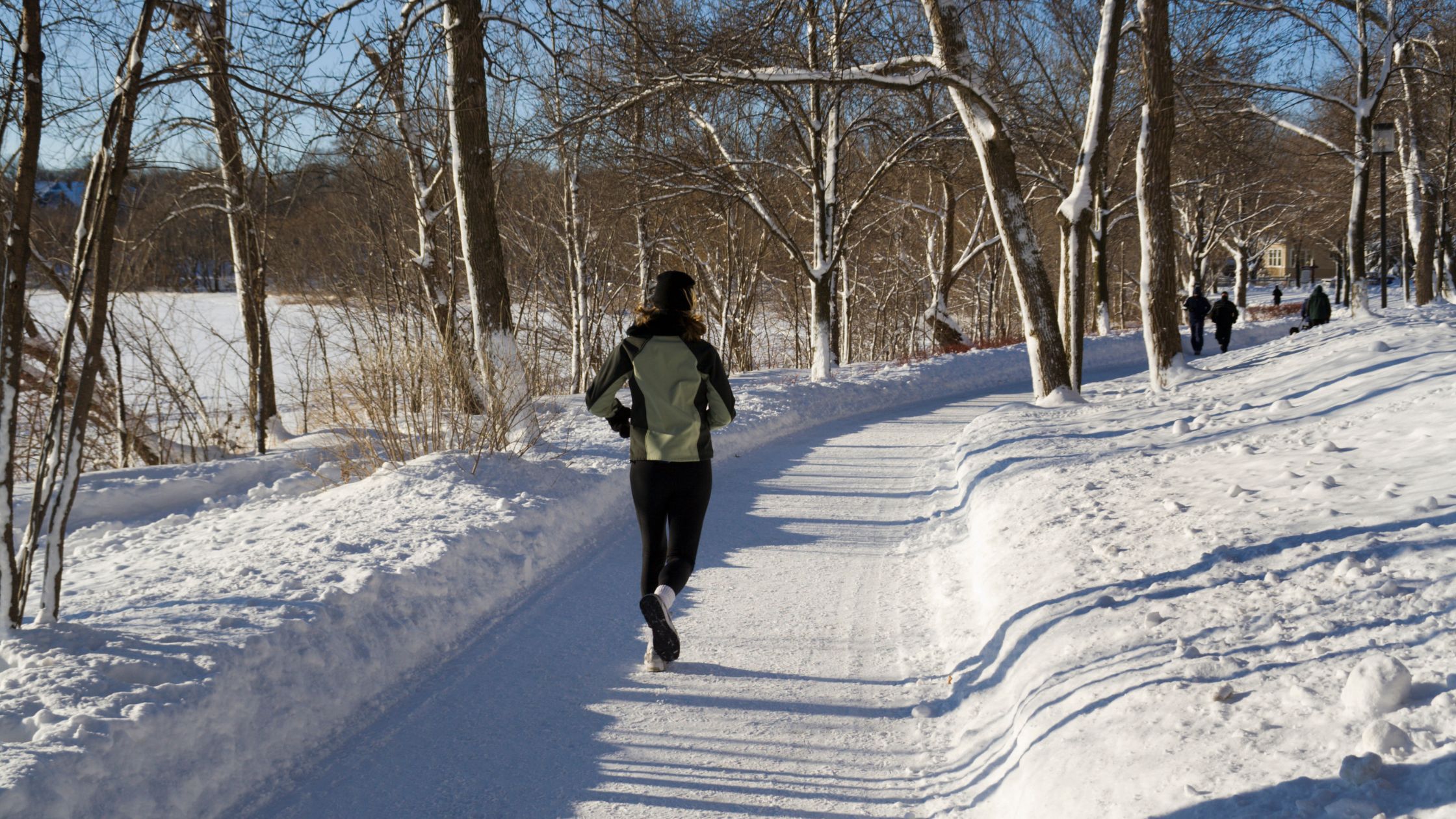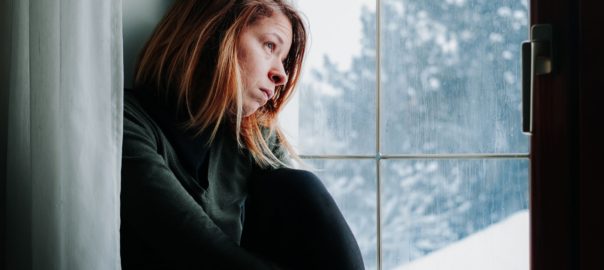Seasonal Affective Disorder, or SAD for short, is a common mood disorder where people experience depressive symptoms in the fall or winter or anxiety in the summer every year but maintain a healthy mental state during other seasons. Approximately four to six percent of Americans can be severely affected; with women four times more likely to experience it than men. Even though it is not commonly found in people younger than age 20, it is still possible for children and young adults to suffer from SAD.
Symptoms of SAD include:
- Fatigue
- Increased need for sleep
- Decreased levels of energy
- Weight gain or loss
- Increase or decrease in appetite
- Difficulty concentrating
- Trouble sleeping
- Sadness
- Anxiety
- Irritability
- Antisocial behavior
- Craving carbohydrates
What causes SAD?
The exact cause of SAD is unknown, but medical professionals attribute it to any of the following:
- Lack of sunlight
- Increase in melatonin levels
- Hormone levels
- Irregular brain chemistry
- Lack of serotonin
- Disruption of our circadian rhythm
- Lack of vitamin D
Lack of sun is the most compelling cause since lacking sunlight affects the brain by increasing melatonin while decreasing serotonin and vitamin D levels in the body. When exposed to sunlight, your optic nerve sends a message to your brain to produce less melatonin. Melatonin calms the body and allows you to sleep. When the sun comes up your brain produces serotonin which induces feelings of wakefulness. When the sun's ultraviolet rays touch your skin, your body produces vitamin D which also helps the body maintain proper serotonin levels.
Three action steps to help with SAD
So how do we improve our overall health to mitigate the effects of SAD? Here are three areas that may be supportive.
Light
The best option for SAD is sunlight due to its long wavelength and the better concentration of red and orange light waves. According to many studies light exposure, particularly bright light, through the eyes boost serotonin activity. The more intense the sunlight is the more powerful the benefits are going to be. It's important to note that a short period of intense sunlight is actually much better than a longer period of sunlight with cloudy weather.
The bright light of the sun is beneficial yet in the winter we are spending more time indoors and looking at screens. This type of light is called blue light and can be detrimental to our health. Florescent lights, computers, cell phones, televisions, e-readers, and more all contain blue light. This light wave range is not helpful for those with SAD. One way to reduce some of this blue light exposure is to wear special glasses which block this light wave. Although many new devices have apps or programs that can block the blue light, it may not be enough to significantly cut your exposure. Therefore, glasses can be a useful option. Light therapy appears to be very helpful with health problems, energy, mood, and anxiety.
Exercise
Exercise and physical activity are great ways to fight depression. If at all possible, bundle up and get outside in the bright sunshine to walk, run, or just play! It is best to forgo sunglasses so your eyes can absorb the sunshine. If getting outside is not always feasible, find a fun physical activity to enjoy yourself and don’t forget to get the family involved too. The best exercises are the ones that you enjoy and will do.
Diet
Proper diet is important in the treatment of SAD. Eating a healthy, whole-food diet, low in processed food and artificial ingredients, can help to address nutrient deficiencies that may be exacerbating SAD symptoms.
Consuming foods rich in Vitamin D and DHA may be particularly helpful in treating SAD. Vitamin D is produced easily in the summer sun by our bodies but is limited in the winter. Fish and other types of seafood are high in both Vitamin D and the essential omega 3 fatty acid DHA. Vitamin D can also be found in dairy products (be sure to choose organic in order to avoid added hormones, antibiotics, and other chemicals), eggs, and mushrooms (especially portabellas which are raised under appropriate conditions). Fish, and nuts contain high amounts of omega-3 while B-complex vitamins come from oily fish, beans, nuts, and whole grains. Herring, mackerel, salmon and flaxseed are the richest sources of omega-3 fatty acids. Dietary supplements also help with SAD. In addition to vitamin D, supplements to add into your diet include omega-3, vitamin B3, vitamin B12, and folate.
Through light therapy, exercise, and diet we may be able to reduce the effects of SAD this winter and in future winters.
Essential oils for SAD
Our sense of smell is incredibly powerful. In addition to the other supports listed above, tapping into our olfactory sense through the addition of essential oils may help as your brain's capacity for thought and emotion is significantly impacted by essential oils.
In fact, studies have shown that inhaling essential oils can send messages to the brain's olfactory system and promote the release of neurotransmitters like serotonin and dopamine, which further regulate mood. Using an essential oil crafted from a blend of oils with beneficial effects may be a beneficial holistic health addition to your SAD self-care routine. One blend in particular, Uplift, is made with the following oils:
- Frankincense – shown to help stimulate the limbic system in the brain which is helpful for elevating your mood
- Lavender – long known as a sedative, calming, anxiety-relieving oil
- Rose – a soothing oil which appears to have anti-depressant properties
- Blue Tansy – reported to be helpful with relaxing both the mind and the body
- Roman Chamomile – a natural antihistamine studies have show this oil to promote relaxation, calm the nerves, and reduce anxiety
- Red Mandarin – another relaxing essential oil, red mandarin may reduce stress and support emotional balance
- Lime – has been reported to help clear trapped emotions including listlessness and fatigue, lime can also support balance and grounding
- Ylang ylang – believed to bring about balance for the central nervous system this is another essential oil that promotes relaxation
According to the manufacturer the best way to apply this blend is by using 2-3 drops behind the earlobes on the mastoid bone, to use over the heart, at the base of the back of the neck, to the wrists, the temple and the forehead. For balancing support apply 3-5 drops to the bottom of the feet in the morning.
Specifically for Seasonal Affective Disorder it’s recommended to apply Uplift 2-3 times per day or as needed.
Josiah Garber, Nancy Farber, and Kate Hunter contributed to this article.
[expand title="Sources"]
- "Aromatherapy And The Central Nerve System (CNS): Therapeutic Mech...: Ingenta Connect". Com, 2022, https://www.ingentaconnect.com/content/ben/cdt/2013/00000014/00000008/art00007. Accessed 25 Dec 2022.
- Cohen, Jodi. "Essential Oils for Seasonal Sadness - Vibrant Blue Oils". Vibrant Blue Oils, 2022, https://vibrantblueoils.com/essential-oils-for-seasonal-sadness/. Accessed 25 Dec 2022.
- Meesters Y, Gordijn MCM. Seasonal affective disorder, winter type: current insights and treatment options. Psychol Res Behav Manag. 2016; 9:317-327. https:/doi.org/10.2147/PRBMS114906
- Melrose, S. Seasonal affective disorder: an overview of assessment and treatment approaches. Depression Research and Treatment, 2015, Article ID 178564, 6 pages, 2015. https://doi.org/10.1155/2015/178564
- Nusssbaumer-Streit, B., Formeris, CA, Morgan, L.C., Fan Noord, M.G., Gaynes, B.N., Greenblatt, A., Wipplinger, J., Lux, LJ, Winkler, D., and Gartlehner, G.. Light therapy for preventing seasonal affective disorder. Cochrane Databse of Systematic Reviews 2019, Issue 3. Art. No. CD011269. DOI: 10.1002/14651858.CD011269.pub3. Accessed 28 November 2022.
- Peiser, B., Seasonal affective disorder and exercise treatment: a review. Biological Rhythm Research, Vol. 40, 2009 – Issue 1, pages 85-97. https://doi.org/10.1080/09291010802067171
[/expand]



Excellent article. My wife and I are halfway through our 60s, are very healthy and are on no prescriptions. The thing is Michigan winters are Gray. Notice the capital G. SAD, I believe has impacted me more since I retired. Mainly because I worked outside a lot in the construction field, but age and being more sedentary has probably affected me in ways I hadn’t realized.
I am on alert now! LOL, Have a great day.